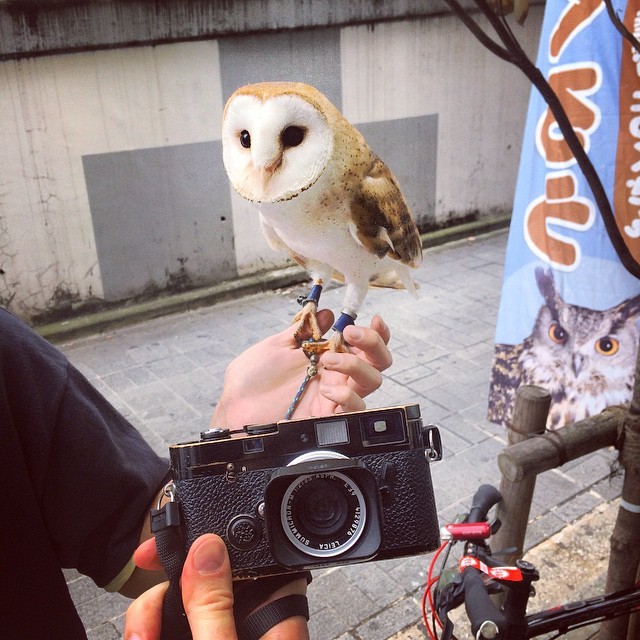i was made to love magic… by jacqueline riman (via http://flic.kr/p/AFj4Yx )

i was made to love magic… by jacqueline riman (via http://flic.kr/p/AFj4Yx )

i was made to love magic… by jacqueline riman (via http://flic.kr/p/AFj4Yx )

Untitled by Nick31276 (via http://flic.kr/p/BbPwNt )

. by Chris Leskovsek (via http://flic.kr/p/pQ3YAP )

. by Chris Leskovsek (via http://flic.kr/p/yphW4w )

by aiww (via https://www.instagram.com/p/_D4m3vKD0m/)


Argentine Yard is massive railroad yard in Kansas City, Kansas, USA. The facility has sixty sorting tracking and multiple car repair shops on the premises. America’s network of freight railroads covers more than 140,000 miles and accounts for approximately 40 percent of intercity freight volume - more than any other mode of transportation.
39°4'51"N, 94°40'42"W

Trees In Water 076 by noahbw (via http://flic.kr/p/BR3qVV )
The last drug has fallen. Bacteria carrying a gene that allows them to resist polymyxins, the antibiotics of last resort for some kinds of infection, have been found in Denmark and China, prompting a global search for the gene. The discovery means that gram-negative bacteria, which cause common gut, urinary and blood infections in humans, can now become “pan-resistant”, with genes that defeat all antibiotics now available. That will make some infections incurable, unless new kinds of antibiotics are brought to market soon. Colistin, the most common polymyxin, is a last-resort treatment for infections with bacteria such as E. coli and Klebsiella that resist all other available antibiotics.

The Pleasure Principle (Portrait of Edward James) by Rene Magritte
(via @lonequixote)

$13.5M Moore Grant to Develop Working ‘Accelerator on a Chip’ Prototype
“The Gordon and Betty Moore Foundation has awarded $13.5 million to Stanford University for an international effort, including key contributions from the Department of Energy’s SLAC National Accelerator Laboratory, to build a working particle accelerator the size of a shoebox based on an innovative technology known as “accelerator on a chip.”
This novel technique, which uses laser light to propel electrons through a series of artfully crafted chips, has the potential to revolutionize science, medicine and other fields by dramatically shrinking the size and cost of particle accelerators.
“Can we do for particle accelerators what the microchip industry did for computers?” said SLAC physicist Joel England, an investigator with the 5-year project. “Making them much smaller and cheaper would democratize accelerators, potentially making them available to millions of people. We can’t even imagine the creative applications they would find for this technology.”
Robert L. Byer, a Stanford professor of applied physics and co-principal investigator for the project who has been working on the idea for 40 years, said, “Based on our proposed revolutionary design, this prototype could set the stage for a new generation of ‘tabletop’ accelerators, with unanticipated discoveries in biology and materials science and potential applications in security scanning, medical therapy and X-ray imaging.””

In less than 10 years, Uruguay has slashed its carbon footprint without government subsidies or higher consumer costs, according to the country’s head of climate change policy, Ramón Méndez. In fact, he says that now that renewables provide 94.5% of the country’s electricity, prices are lower than in the past relative to inflation. There are also fewer power cuts because a diverse energy mix means greater resilience to droughts. It was a very different story just 15 years ago. Back at the turn of the century oil accounted for 27% of Uruguay’s imports and a new pipeline was just about to begin supplying gas from Argentina.
Swami Vivekananda’s Raja Yoga, published in 1896, became a best-seller and had a lasting impact on American culture […] Vivekananda’s yoga didn’t involve the asanas, or poses, that we know as yoga today, because asana-based yoga is a modern phenomenon—one that emerged from the Indian nationalist movement’s attempt to develop a distinctly Indian version of what was then called physical culture (essentially, physical fitness). The short version of this story, which scholars like Mark Singleton and Joseph Alter have described, is that Indian innovators combined facets of medieval tantric practices with elements from Indian wrestling exercises, British army calisthenics, and Scandinavian gymnastics. They called their system “yoga,” a word that previously had had very different connotations.

_-3 (via http://flic.kr/p/BU7W16 )

_-2 (via http://flic.kr/p/AWAZx5 )

_ (via http://flic.kr/p/BrZd3J )

201501126 (via http://flic.kr/p/BJwBDf )

201501125 (via http://flic.kr/p/AWAVrQ )

201501124 (via http://flic.kr/p/BrZ8YS )

201501123 (via http://flic.kr/p/AWASHd )

201501122 (via http://flic.kr/p/BRP7JE )
Perhaps our descendants won’t condemn us for our apathy and inertia. After all, we will leave them the greatest man-made coral reefs the world has ever seen; streets where we used to live and breathe and dream. There is however hope, provided we don’t leave matters simply in the hands of the state and the markets. We will need to engage with engineers, architects, designers, writers, thinkers and, above all, citizens to anticipate and mitigate what may come. We can save our cities but only if we face the prospect that they may already be lost and work our way back from the end.



If only it was this easy!! #getlost #meditate #thelostexplorer #breathe #givenatureavoice #turndownthehum #explore #curious #openit #silence #play #everyday #adventures #travels #photography #goexplore #getoffthetrail #life by thelostexplorer (via https://www.instagram.com/p/-4izQPAXzg/)

Creepy life-size twin dolls on the London Underground this morning promoting Derren Brown’s new psychological theme park ride.
#creepyart #weirdart #darkart #creepy #victorian #dolls #performanceart #london #artist #art #instaart #instaartist #artistsofinstagram #artistsoninstagram #potd #fotd #artmag #artmagazine #collidemag by collidemag (via https://www.instagram.com/p/-5H7NVH1WA/)

Gamebox by nicolasnova (via https://www.instagram.com/p/-571SGGK7U/)

Tokyo … Owl Style? Outside of Shinjuku station yesterday a man and his owl were advertising for a newly opened Owl Cafe. ( website: mohumohu99.jp ) I’ve been to a few cat cafes, but not one with a parliament of owls. Yet.

Some one-hour photo shops in Japan have two clocks out front- the left one is the current time, and the right is when your film and prints will be done. #Tokyo #PhotoCulture #ShootFilm

Zheng Chongbin
Dark Shade
2012
“Anyone who believes exponential growth can go on forever in a finite world is either a madman or an economist.”
–Kenneth Boulding
(viaclimateadaptation)
“As stories about the building’s frequent problems with power and water usage came out, the choice seemed even weirder and more arbitrary. Why put the infinite archive of state surveillance in a place so vulnerable to drought?”

*The surface of Pluto

201501121 (via http://flic.kr/p/BMZcaY )

201501120 (via http://flic.kr/p/BQi2s2 )

Ludo_2461 rue des Pruniers Paris 20 by meuh1246 (via http://flic.kr/p/BMMWgm )

Uboot Action Sampler by Melanie Kathryn King (via http://flic.kr/p/iK1h2i )

the.kingdom.of.ghosts by jonathancastellino (via http://flic.kr/p/ASsYMY )

_1158058.jpg by 林官賢 (via http://flic.kr/p/BnUeA7 )




201501119 (via http://flic.kr/p/BF4PcB )

201501118 (via http://flic.kr/p/BF4Nbt )

201501117 (via http://flic.kr/p/AQQgyo )

201501116 (via http://flic.kr/p/BF4KJz )

201501115 (via http://flic.kr/p/AQW9Kv )

201501114 (via http://flic.kr/p/AQW8Bi )

201501113 (via http://flic.kr/p/BeQryk )

study (function of the oblique) by fac_610 (via http://flic.kr/p/BCpqkJ )

Ice Watch in place! #icewatchparis by studioolafureliasson (via https://www.instagram.com/p/-0vMATLRN4/)

Brussels 13th floor. by frederik_de_wilde (via https://www.instagram.com/p/-06L5xJRCC/)

#icewatchparis by studioolafureliasson (via https://www.instagram.com/p/-1BFftrREr/)

Burning coal is, quite simply, not compatible with staying within a 2°C limit on global warming…
Analysis released at COP21 this week by Climate Action Tracker indicates that:
- ‘If all coal plants in the pipeline were to be built, by 2030, emissions from coal power would be 400% higherthan what is consistent with a 2°C pathway.’
- ‘Even with no new construction, in 2030, emissions from coal-fired power generation would still be more than 150% higher than what is consistent with holding warming below 2°C.’
Also see post of Carbon Tracker’s report on $2 trillion of potentially wasted investment in fossil fuel projects
Image from National Geographic




Frequently cited co-benefits of climate change mitigation techniques (Red arrows between a mitigation technology and an effect indicate that the technology will increase the effect; green arrows indicate an opposite trend.)
From Health and climate change: policy responses to protect public health, published in the Lancet (register for free access to article).

Looking to explore, understand, interconnect and unpick the issues that make up the final draft climate change agreement to be discussed and agreed on [hopefully…] at the COP21 conference in Paris?
This interactive guide from Carbon Brief can offer some help…



Moscow 2015 by Evgeniy Khalin (via http://flic.kr/p/AmYawf )


Brandalism placement for Climate Games.
As someone who cares deeply about social change and personal transformation, that was exciting to me. Larps were said to let players experience particular emotions, to step into each other’s perspective, possibly even explore artistic and political visions for new forms of society.
https://aeon.co/essays/can-live-action-role-play-games-bring-about-social-change

(via http://flic.kr/p/Bgx7TY )

(via http://flic.kr/p/BFn5V1 )

TROLLUX2LUXE (via http://flic.kr/p/BHF8tP )

Tristan Eaton_0289 rue du Chevaleret Paris 13 by meuh1246 (via http://flic.kr/p/AJxtwR )

erase by lars on mars (via http://flic.kr/p/AJLget )
Stochastic terrorism is the use of mass communications to incite random actors to carry out violent or terrorist acts that are statistically predictable but individually unpredictable. In short, remote-control murder by lone wolf. This is what occurs when Bin Laden releases a video that stirs random extremists halfway around the globe to commit a bombing or shooting. This is also the term for what Beck, O'Reilly, Hannity, and others do. And this is what led directly and predictably to a number of cases of ideologically-motivated murder similar to the Tucson shootings. As of this writing, there is no evidence to link Jared Loughner to a specific source of incitement; but some of the other cases can be clearly linked.
among the 27 fatal terror attacks inflicted in this country since 9/11, 20 were committed by domestic right-wing extremists. (The other seven attacks were committed by domestic jihadists, not by foreign terrorist organizations.) Of the 77 people killed in these 27 incidents, two-thirds died at the hands of anti-abortion fanatics, “Christian Identity” zealots, white anti-Semites, or other right-wing militants.

Untitled by Nick31276 (via http://flic.kr/p/BEYFtK )

There is an environmental disaster unfolding in southeastern Brazil with the recent collapse of two dams at an iron ore mining facility. To better convey the extent of the contamination, I have put together a full feature on the Daily Overview Juxtapose page. You can check it out here:
www.dailyoverview.com/juxtapose
In this frame we see Bento Rodrigues, a small village that was destroyed when the nearby dam failed and released 62 million cubic meters of wastewater. The sludge wiped out hundreds of homes and caused the death of twelve people. Eleven others are still missing. Because of the ongoing pollution, more than half a million people still do not have access to clean water for drinking or irrigating their crops. Yesterday, the contaminated water covered 400 miles of the Rio Doce River and entered into the sea, killing significant amounts of planet and animal life along the way. Officials are concerned that the toxins will threaten the Comboios Nature Reserve, a protected area for the endangered leatherback turtle.
This events definitely hasn’t received enough attention in the news so please share this post if possible.

shimpei takeda. trace #7 nihonmatsu castle.

Dark Sand Cascades on Mars via NASA http://ift.tt/1Oo0Vot

h2op0077 by chriswoebken (via http://flic.kr/p/rjTs9H )

☾ by EmilyJHansell (via http://flic.kr/p/BtdYkG )
“The ocean remains a glaring blind spot in the Western imagination. Catastrophic events remind us of its influence—a lost airplane, a shark attack, an oil spill, an underwater earthquake—but we tend to marginalize or misunderstand the scales of the oceanic. It represents the “other 71 percent” of our planet. Meanwhile, like land, its surface and space continue to be radically instrumentalized: offshore zones territorialized by nation-states, high seas crisscrossed by shipping routes, estuaries metabolized by effluents, sea levels sensed by satellites, seabeds lined with submarines and plumbed for resources. As sewer, conveyor, battlefield, or mine, the ocean is a vast logistical landscape. Whether we speak of fishing zones or fish migration, coastal resilience or tropical storms, the ocean is both a frame for regulatory controls and a field of uncontrollable, indivisible processes. To characterize the ocean as catastrophic—imperiled environment, coastal risk, or contested territory—is to overlook its potential power.”
–Wet Matter, Harvard Design Magazine (viainthenoosphere)

BUT NOW SPACE WAS PART OF THE OBJECT¹Poster (Side A & Side B combined), 2015.
BUT NOW SPACE WAS PART OF THE OBJECT¹is an inquiry into whether or not a typeface can be absent in its own type specimen. Negative space becomes positive space, secondary becomes primary, reference becomes content. False protagonist Booq Alt delivers the performance of Booq—a typeface whose identity can only be imagined through the interplay of transcribed lectures by John Freeman, Esa Matinvesi and Krister Olsson from Booksfromthefuture Summer School 2015 and a pool of public domain images.
A publication by Masaki Miwa and Ying Tong Tan, published in parallel with The Multiple Lives of a Blank Book (Booksfromthefuture, 2015).
Buy (Lulu)
First edition
Print on demand
388 pages
107.95mm x 174.752mm (4.25 x 6.88 inches)
Softcover
English
ISBN 978-1-326-40233-4
Publishers: Zyxt and Booksfromthefuture
Editors: Masaki Miwa, Ying Tong Tan, Yvan Martinez and Joshua Trees
Guest Editors: Krister Olsson and Esa Matinvesi
Concept and Design: Masaki Miwa and Ying Tong Tan
To approach the subject of red mercury is to journey into a comic-book universe, a zone where the stubborn facts of science give way to unverifiable claims, fantasy and outright magic, and where villains pursuing the dark promise of a mysterious weapon could be rushing headlong to the end of the world. This is all the more remarkable given the broad agreement among nonproliferation specialists that red mercury, at least as a chemical compound with explosive pop, does not exist.
http://www.nytimes.com/2015/11/22/magazine/the-doomsday-scam.html?_r=1

2 by Frank o’ (via http://flic.kr/p/zNRpAF )

☾ by EmilyJHansell (via http://flic.kr/p/AAZfLX )

Khartoum, Sudan by europeanspaceagency (via http://flic.kr/p/ABkyh9 )

black hat by Benoît Debuisser (via http://flic.kr/p/zHa3nD )

thursday ? by (x)99. (via http://flic.kr/p/Bo68eQ )

☾ by EmilyJHansell (via http://flic.kr/p/ArVwDS )

a small corner to fall out by lars on mars (via http://flic.kr/p/AsnNDp )
Clearly, recreational trespass and other “urban interventions” in and of themselves do little to challenge the status quo of late capitalist urbanism. Rather ironically, if unsurprisingly, the proliferation and popular awareness of urban exploration has contributed to a tightening of the very spatial controls that recreational trespassers seek to subvert. For instance, people sneaking onto construction sites merely for the sake of doing so is now something that security contractors actively seek to prevent through heightened security measures. Furthermore, there is little that is inherently “transgressive” about recreational trespassers’ thrill-seeking. In fact, within our current cultural conjuncture, such practices might well be more accurately conceived of as hyper-conformist (see Moxon, 2011; Raymen and Smith, 2015).
https://deviantleisure.wordpress.com/2015/09/21/urban-exploration-as-deviant-leisure/

Muchlatergram by changeist (via https://instagram.com/p/-bKXmbPnVLhZhCNuA89tMVz7tyg56eLHaxczw0/)


BREAKING NEWS : Belgium Police using the new 200mph Hovercat during terrorist operations #BrusselsLockdown

another one from that time #underground -
learning about the humanity’s largest scientific endeavour (#CERN) with some of the awesomest people on this planet -
2013, the stupidest I’ve ever felt (in a good way)
#LHC #particleaccelerator #quantumtheory #astrophysics ⚡️ by monikabielskyte (via https://instagram.com/p/-ZfOMtwS49/)

Fractals - Compression Architecture (3) Space into Space by Allan1952 (via http://flic.kr/p/ASff5y )

☾ by EmilyJHansell (via http://flic.kr/p/Aq17EY )

Illustrations of Lepidoptera taken from ‘Butterflies from China, Japan and Corea’ by John Henry Leech. Published 1892 by R.H. Porter.
Click on the picture for more information.
Harvard University, Museum of Comparative Zoology, Ernst Mayr Library

Flooded mudflats from the air, with each RGB color normalized.

Edward Snowden
Charged with espionage and theft of government property. Snowden is a computer specialist, former employee of the Central Intelligence Agency, and former contractor for the National Security Agency. He disclosed thousands of classified documents revealing details of global surveillance programs. He currently lives in an undisclosed location in Russia; he is considered a fugitive by American authorities.
United States by aiww (via https://instagram.com/p/-RefS8qD63/)

Daido Moriyama from the rare #photobook Dream of Water #photobookjousting by photobookstore (via https://instagram.com/p/-RZafMRE9H/)

by the_effects_of_silent_noise_ (via https://instagram.com/p/-SGjgLjBYD/)